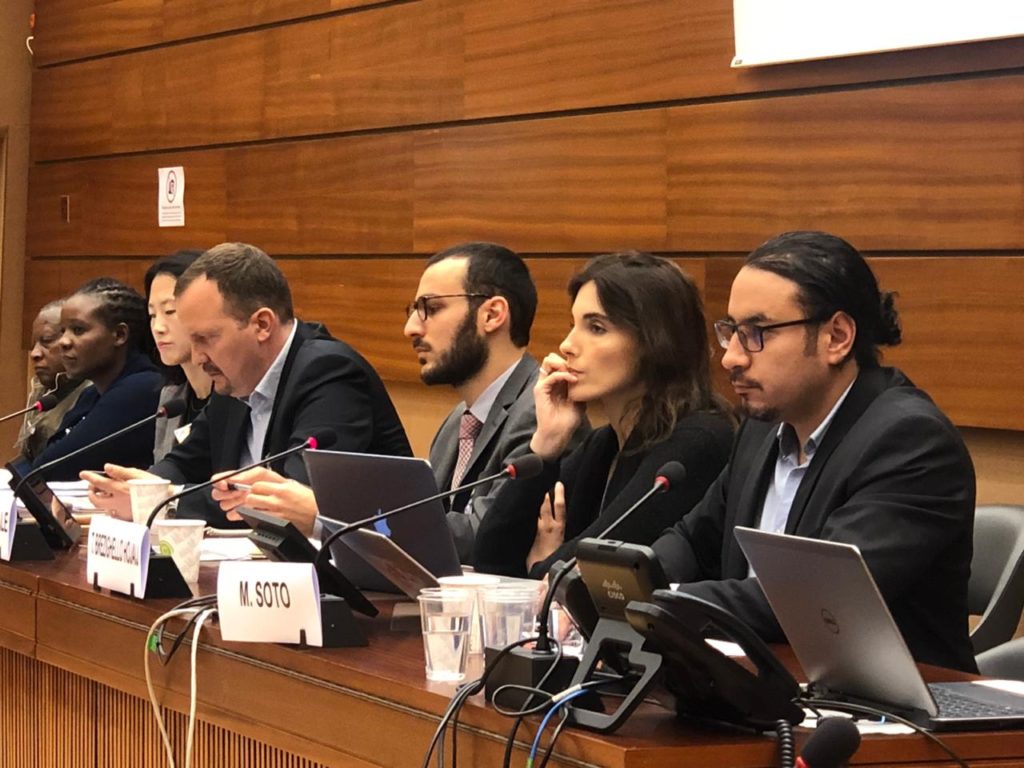
Miguel SOTO
Director of Strategic Engagement and Advocacy Campaigns,
Project on Organization, Development, Education and Research (PODER)
Overview
Thank you John for this invitation and thank you all of you for coming to this session and, to the members of this panel and also to the translators. My name is Miguel Soto and I am the Director of Strategic Engagement and Advocacy Campaigns at Project on Organization, Development, Education and Research (PODER), a regional organization based in Mexico that fights to end corporate capture and to get corporate accountability, we also have the privilege to work with local communities so they can have access to justice.
In Mexico, one of the largest mining groups in the world called Grupo México, owned by Germán Larrea, the second richest man in the country, is building a huge dam, a dam whose size is the equivalent of forty thousand baseball fields, close to a community of 200 people called Bacanuchi.
This is happening in the region where five years ago that same company (Buenavista del Cobre, subsidiary of Grupo México) was responsible for the spill of 40 million liters of copper sulfate from another dam in the same mine. This spill affected 22 thousand people living along the 250km of the Sonora River. It was defined as “the worst environmental disaster in the history of the mining industry in Mexico” by the Mexican government.
Five years after that catastrophe, remediation is not complete, access to justice is still a question mark for affected communities and collusion between authorities and companies prevails. And with the construction of a new, much larger tailings dam, the sense of risk is rising for communities of the Sonora river.
Situation for people of Sonora, from Bacanuchi to be specific, is getting worst, rather than obtaining justice, reparation and non-repetition measures they are facing more threats. The history of recklessness of corporations such as Grupo Mexico make us believe that with no doubt the dam will fail. The question here is just when is this going to happen and how much time would it take for the toxic waste to devastate the community of Bacanuchi and it’s ecosystem.
I am sharing with you just 5 of the overarching failures that we have found with this issue:
NUMBER 1) Dam was built without any participation or consent from the community. Case was litigated and taken to the Supreme Court that ordered to call for public and informative meeting to the community. The event did not accomplished what the judge said and it needs to be repeated.
NUMBER 2) There was no access to information for the community. A so called “Preventive report” was approved by the Mexican government in “fast track”, in 20 days.
NUMBER 3) There is no information on the monitoring of superficial and underground water. There is no information on measures to mitigate and prevent environmental and social impacts, according to that report written by the company.
NUMBER 4) Dam was built and began to operate before having approval from the Environment Ministry.
NUMBER 5) Grupo México has not even complied with remediation measures due to the spill it caused in 2014.
Recommendations
What I’ll share with you are not precisely recommendations but rather demands that have been put forward by communities organized under the Comités de Cuenca Río Sonora, who have been struggling for justice and remediation for 5 years now.
It is essential that all of the stakeholders be ultimately responsible for what corresponds to them and to respect the law and the mexican constitution.
These are the demands:
To the federal and local judges: They need to be brave enough to rule in favor of human rights and avoid intimidation from corporations.
The mexican government must:
-Guarantee the human right to a healthy environment, to water and sanitation and access to information. It has been 5 years and communities still ignore if water and food comes from a clean and safe source.
-Guarantee the right to free, prior, informed and culturally appropriate participation and the consent of the communities, participation must be safe and according to the highest standars such as the Escazú agreement.
-Conduct inspections of the dam and demand reports/studies related to soil, water and air monitoring. Reports must be public.
-Mexican Government must ratify now the Escazu agreement
Grupo Mexico and investors:
Company has to immediately suspend the construction and operation of the dam
Stop coercion and division of communities
Inform to stakeholders, including communities, local and international authorities, investors about the legal, political, environmental and social situation of the project
To develop and present to the authorities, community, and SCO a report on mitigation and remediation plans
Comply with the obligations arising from the 2014 spill such as access to justice, remediation, non-repetition measures, the construction of the pendent health centers and reopening the remediation trust for the whole community.
Investors must engage with a human rights approach and demand companies to respect them, investors must take out their money from companies that violates human rights.
Communities have been witnessing corruption, impunity and protection of economic elites for too long. It is time for the States to fulfill their obligations and for corporations to change their practices. Business as usual is unacceptable.
Last reflection
What we have hear here in the different cases is a very similar pattern of abuses committed by actors that are, by far, more powerful than the states themselves. This power imbalance is the key element that guarantees impunity in the extractive industries. The power of this industries and their money needs to be limited and that is why we need mandatory rules to protect communities and our environment. Corporate Capture must be stopped. Human Rights are not negotiable.
